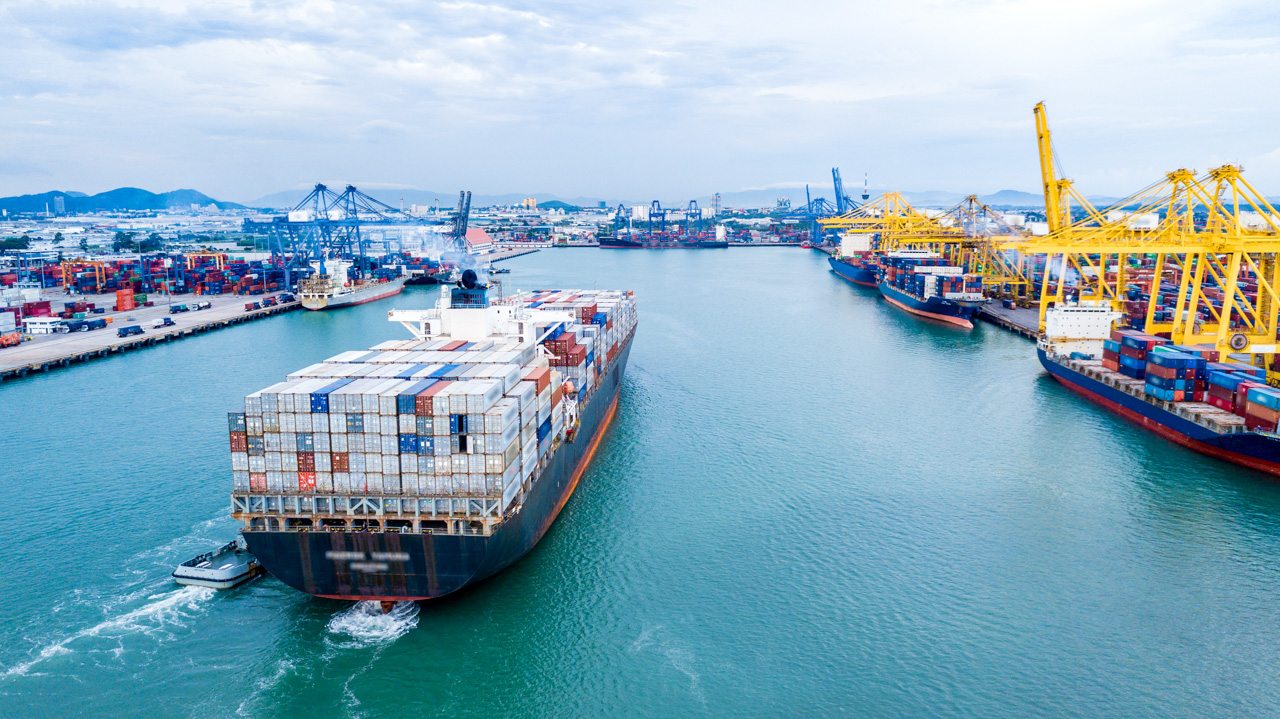Chief supply chain officers (CSCOs) must strategically reduce the rate of disruption to their supply chains by reducing their surface areas, according to Gartner, Inc. Research by Gartner shows that disruption-shaping organizations are likely to experience less than one-third of disruptions than their peers.
Gartner defines supply chain surface areas as the sum of all the products, processes and networks that compose the supply chain today and represent touchpoints that risk events can have with the supply chain.
“CSCOs should reduce the surface areas of their supply chains by simplifying processes, reducing movement within their supply chains, and reducing the number of sites and suppliers that compose their networks,” said Suzie Petrusic, director research with the Gartner Supply Chain practice. “With a higher cadence of risk event, a smaller surface area is an asset, a large surface a major liability. CSCOs can’t control how many risk events will happen, but they can control the size of the target they want their organization to be.”
Many supply chains are easy to disrupt because they pose a large target. They expanded over decades and dispersed risk across a global network, while optimizing cost. Processes became more complex and required a lot of movement of goods and material within the supply chain – a system that is easy to disrupt.
Supply chain organizations that experience fewer disruptions today have managed to control the surface areas of their supply chains by constraining the number of touchpoints risk events can have with their organization. This means fewer third-party logistics providers, shipping modes and lanes as well as greater distances between suppliers, factories, warehouses and distribution centers. Processes are being redesigned and simplified.
“Disruption shapers balance exposure to the overall risk environment with exposure to single catastrophic risk events. The goal is not extreme consolidation but finding the right size for the organization at any given point in time,” Petrusic added.
 Disruption Shapers Embed Disruption Awareness into the Overall Supply Chain Strategy
Disruption Shapers Embed Disruption Awareness into the Overall Supply Chain Strategy
For disruption shapers, reducing disruption is a part of the strategy planning process, considered along with cost, quality and speed. However, this does not mean abandoning the strategic business objectives of past decades. Instead, CSCOs can redefine cost optimization by including the cost of constant disruption in their calculations.
“A commitment to an optimal surface area does not mean that you can never expand. It just means that CSCOs have to make intelligent design choices that diversify the total risk,” Petrusic said. “They must understand that the current environment will make it harder and harder to deliver reliable and profitable service to customers, and they should act now to experience less disruption later.”
Disruption Shaping Reduces Costs and Creates Competitive Advantages
Disruption-shaping organizations benefit in multiple ways. Their approach reduces costs to the supply chain because the organization experiences fewer disruptions overall. When a disruption happens, the network is more likely to be prepared and recovery will take less time.
“The biggest benefit of this approach is the competitive advantage it creates. Disruption shapers are ready and waiting to service the customers that their closest competitors are losing because they are too busy responding to risks,” Petrusic concluded.
Gartner clients can read more in “Supply Chain Executive Report: Shaping Supply Chain Disruption in a Volatile Risk Environment”.
การ์ทเนอร์ อิงค์ เผยผู้บริหารด้านซัพพลายเชน (CSCOs) ต้องเพิ่มกลยุทธ์ในการลดอัตราการหยุดชะงักให้กับห่วงโซ่อุปทานโดยการลดความเสี่ยงในพื้นที่หน้างานการผลิต ผลวิจัยของการ์ทเนอร์ยังแสดงให้เห็นว่าองค์กรที่ปรับตัวรับมือกับการหยุดชะงักมีแนวโน้มเจอปัญหานี้น้อยกว่าหนึ่งในสามเมื่อเทียบกับองค์กรอื่นในอุตสาหกรรมเดียวกัน
การ์ทเนอร์ได้กำหนดพื้นที่หน้างานของห่วงโซ่อุปทานอันประกอบไปด้วยจำนวนผลิตภัณฑ์ กระบวนการผลิตต่าง ๆ และเครือข่ายที่เกี่ยวข้องทั้งหมดกับห่วงโซ่อุปทาน ณ ปัจจุบัน โดยแสดงถึงจุดสัมผัสต่าง ๆ ที่อาจเกิดเหตุการณ์ความเสี่ยงได้กับห่วงโซ่อุปทาน
นางสาวซูซี่ เพทรูสิค ผู้อำนวยการฝ่ายวิจัยแนวปฏิบัติด้านห่วงโซ่อุปทานของการ์ทเนอร์ กล่าวว่า “ผู้บริหารด้านซัพพลายเชนควรลดพื้นที่หน้างานของห่วงโซ่อุปทานโดยเน้นกระบวนการทำงานให้ง่ายขึ้นและลดการเคลื่อนย้ายต่าง ๆ ภายในห่วงโซ่อุปทานขององค์กร รวมถึงจำนวนไซต์ทำงานและซัพพลายเออร์ในเครือข่าย เนื่องจากโอกาสเกิดความเสี่ยงที่สูงขึ้น หน้างานการผลิตที่มีพื้นที่ขนาดใหญ่จะได้รับผลกระทบมากกว่าหน้างานขนาดเล็กที่เป็นเสมือนสินทรัพย์ขององค์กร แม้ผู้บริหารซัพพลายเชนจะไม่สามารถควบคุมปริมาณเหตุการณ์ความเสี่ยงที่จะเกิดขึ้น แต่พวกเขาสามารถคุมขนาดของเป้าหมายที่องค์กรต้องการได้”
ธุรกิจห่วงโซ่อุปทานจำนวนมากเกิดการหยุดชะงักได้ง่ายเป็นเพราะการกำหนดเป้าหมายขนาดใหญ่ โดยองค์กรต้องใช้เวลาหลายทศวรรษในการขยายธุรกิจและกระจายความเสี่ยงไปทั่วทั้งเครือข่ายทั่วโลก ขณะเดียวกันก็เพิ่มประสิทธิภาพของต้นทุนให้มากขึ้น หลายกระบวนการกลายเป็นความซับซ้อนและต้องขนย้ายสินค้าและวัสดุมากมายในห่วงโซ่อุปทาน ทำให้ระบบเกิดการหยุดชะงักได้ง่าย
หลายองค์กรในธุรกิจซัพพลายเชนเผชิญกับปัญหาการหยุดชะงักน้อยลงในปัจจุบัน เพราะมีการจัดการควบคุมพื้นที่หน้างานแหล่งผลิตของห่วงโซ่อุปทานโดยจำกัดจำนวนจุดสัมผัสที่เหตุการณ์ความเสี่ยงอาจเกิดขึ้นในองค์กร นั่นคือ จำกัดจำนวนผู้ให้บริการขนส่ง วิธีการจัดส่งและช่องทางจัดส่งให้น้อยลง ตลอดจนเว้นระยะห่างระหว่างผู้ผลิต โรงงาน คลังสินค้าและศูนย์กระจายสินค้าที่ดีมากยิ่งขึ้น โดยกระบวนการเหล่านี้กำลังได้รับการปรับใหม่และทำให้ใช้งานง่ายยิ่งขึ้น
“การควบคุมการหยุดชะงักสร้างความสมดุลด้านความเสี่ยงต่อสภาวะแวดล้อมทั้งหมดร่วมกับหลายเหตุการณ์ความเสี่ยงที่เกิดจากมหันตภัยร้ายเพียงหนึ่งเดียว เป้าหมายไม่ใช่การรวมทุกอย่างไว้ในที่เดียว แต่คือการค้นพบเป้าหมายในขนาดที่เหมาะสมแก่องค์กร ณ ช่วงเวลาใดเวลาหนึ่ง” เพทรูสิค กล่าวเพิ่มเติม

การฝังกลไกควบคุมการหยุดชะงักเพื่อสร้างการรับรู้ นำไปสู่กลยุทธ์ห่วงโซ่อุปทานทั้งหมด
ในส่วนของกลไกควบคุมการหยุดชะงัก เพื่อลดปัญหาการหยุดชะงักคือส่วนหนึ่งของขั้นตอนการวางแผนเชิงกลยุทธ์ที่ต้องนำมาพิจารณาควบคู่ไปกับต้นทุน คุณภาพ และความรวดเร็วในการผลิต อย่างไรก็ตามสิ่งนี้ไม่ใช่การละทิ้งเป้าหมายและกลยุทธ์การดำเนินธุรกิจเดิมในทศวรรษที่ผ่านมา แต่แทนที่ด้วยการที่ผู้บริหารด้านซัพพลายเชนจะสามารถกำหนดการเพิ่มประสิทธิภาพด้านต้นทุนใหม่ที่รวมถึงการคำนวณค่าใช้จ่ายในการหยุดชะงักอย่างต่อเนื่อง
เพทรูสิค ยังกล่าวอีกว่า “ความมุ่งมั่นในการสร้างหน้างานการผลิตที่เหมาะสมที่สุดไม่ได้แปลว่าคุณจะไม่สามารถขยายมันได้อีกต่อไป แต่หมายถึงผู้บริหารด้านซัพพลายเชนต้องเลือกการวางแผนที่ชาญฉลาดและกระจายความเสี่ยงทั้งหมด พวกเขาต้องเข้าใจสภาพแวดล้อมในปัจจุบันว่ามีความยากในด้านการดำเนินการและยากยิ่งขึ้นในการสร้างความน่าเชื่อถือด้านการขนส่ง รวมถึงบริการที่สร้างกำไรให้แก่ลูกค้า โดยควรดำเนินการทันทีเพื่อไม่ให้เกิดการหยุดชะงักตามมาภายหลัง”
การสร้างกลไกการหยุดชะงักช่วยลดต้นทุนและเพิ่มความได้เปรียบด้านการแข่งขัน
องค์กรที่ปรับตัวรับมือกับการหยุดชะงักจะได้รับประโยชน์ในหลากหลายด้าน ทั้งการลดค่าใช้จ่ายในห่วงโซ่อุปทานเนื่องจากประสบปัญหานี้น้อยลง และเมื่อเกิดการหยุดชะงักเครือข่ายการทำงานทั้งหมดจะเตรียมพร้อมรับมือและกู้คืนได้ในเวลาอันสั้น
“ประโยชน์ที่ใหญ่ที่สุด คือ ความได้เปรียบด้านการแข่งขันที่ได้สร้างขึ้น กลไกลการหยุดชะงักมีความพร้อมและรอให้บริการลูกค้าเพื่อเติมเต็มช่องว่างในจุดที่คู่แข่งกำลังเสียรังวัด เพราะพวกเขามัวแต่ยุ่งกับการตอบสนองต่อความเสี่ยงมากเกินไป” เพทรูสิค กล่าวสรุป
ลูกค้าการ์ทเนอร์สามารถคลิกอ่านข้อมูลเพิ่มเติมได้ที่รายงาน “Supply Chain Executive Report: Shaping Supply Chain Disruption in a Volatile Risk Environment”.
 Disruption Shapers Embed Disruption Awareness into the Overall Supply Chain Strategy
Disruption Shapers Embed Disruption Awareness into the Overall Supply Chain Strategy